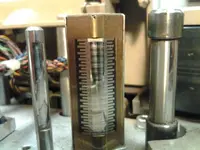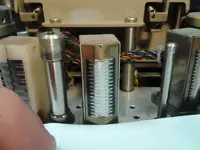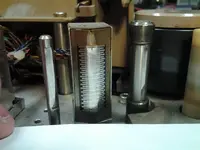Ignatius-
New member
Hey everybody!
So, I'm currently in the market for a 1" 16 track and was wondering what you guys thought about some of these models:
TASCAM MS-16
TASCAM 85-16(b)
TASCAM ATR-60
OTARI MX-70
I know this has been discussed before, but it seems like the advanced search function got way worse with the new website here... Anyway, I've been doing a fair amount of research about this format around the interwebs, and it seems like the general response is either the pros saying, "Why don't you just get a MCI/Studer/Ampex 2" 24 track" and then the occasional, "I love my MS-16" or "the 85-16b is a TANK" (hate vs. love, if you will) ...
So, I wanted to get some of your opinions. Which of these machines would have the most spare parts available? Are there any obvious issues with any of these machines? I know the MS-16 has a rather intense (relatively) low-end bump... Does anyone know how that would compare to a TSR-8 or a 34b (the two machines I have the most experience on)? I've heard the MX-70 had an output problem (or something?) that is a pain to deal with... Also, it seems like parts for the MX-70 are very difficult to come by. Any thoughts?
Second question (and kind of a side note)... Why does it seem like everybody in the "professional" world hates on dbx noise reduction? Is the dbx NR in the MS-16 or 85-16b the same as a TSR-8 (my current machine)? I've used dbx noise reduction on my 34b and TSR-8, and quite frankly I kind of really like it (a lot). Is there anything different with the noise reduction in the TASCAM units? Sorry if this has already been addressed, but it seems like I can't find a straight answer... people don't even answer the question, just 'get a 2" machine...'
Thoughts?
So, I'm currently in the market for a 1" 16 track and was wondering what you guys thought about some of these models:
TASCAM MS-16
TASCAM 85-16(b)
TASCAM ATR-60
OTARI MX-70
I know this has been discussed before, but it seems like the advanced search function got way worse with the new website here... Anyway, I've been doing a fair amount of research about this format around the interwebs, and it seems like the general response is either the pros saying, "Why don't you just get a MCI/Studer/Ampex 2" 24 track" and then the occasional, "I love my MS-16" or "the 85-16b is a TANK" (hate vs. love, if you will) ...
So, I wanted to get some of your opinions. Which of these machines would have the most spare parts available? Are there any obvious issues with any of these machines? I know the MS-16 has a rather intense (relatively) low-end bump... Does anyone know how that would compare to a TSR-8 or a 34b (the two machines I have the most experience on)? I've heard the MX-70 had an output problem (or something?) that is a pain to deal with... Also, it seems like parts for the MX-70 are very difficult to come by. Any thoughts?
Second question (and kind of a side note)... Why does it seem like everybody in the "professional" world hates on dbx noise reduction? Is the dbx NR in the MS-16 or 85-16b the same as a TSR-8 (my current machine)? I've used dbx noise reduction on my 34b and TSR-8, and quite frankly I kind of really like it (a lot). Is there anything different with the noise reduction in the TASCAM units? Sorry if this has already been addressed, but it seems like I can't find a straight answer... people don't even answer the question, just 'get a 2" machine...'
Thoughts?

 (regardless of what type of tape machine it is). I will definitely keep the TSR-8 around (I might even sync it with an MS-16 if I can get a hold of one of these machines!).
(regardless of what type of tape machine it is). I will definitely keep the TSR-8 around (I might even sync it with an MS-16 if I can get a hold of one of these machines!).





